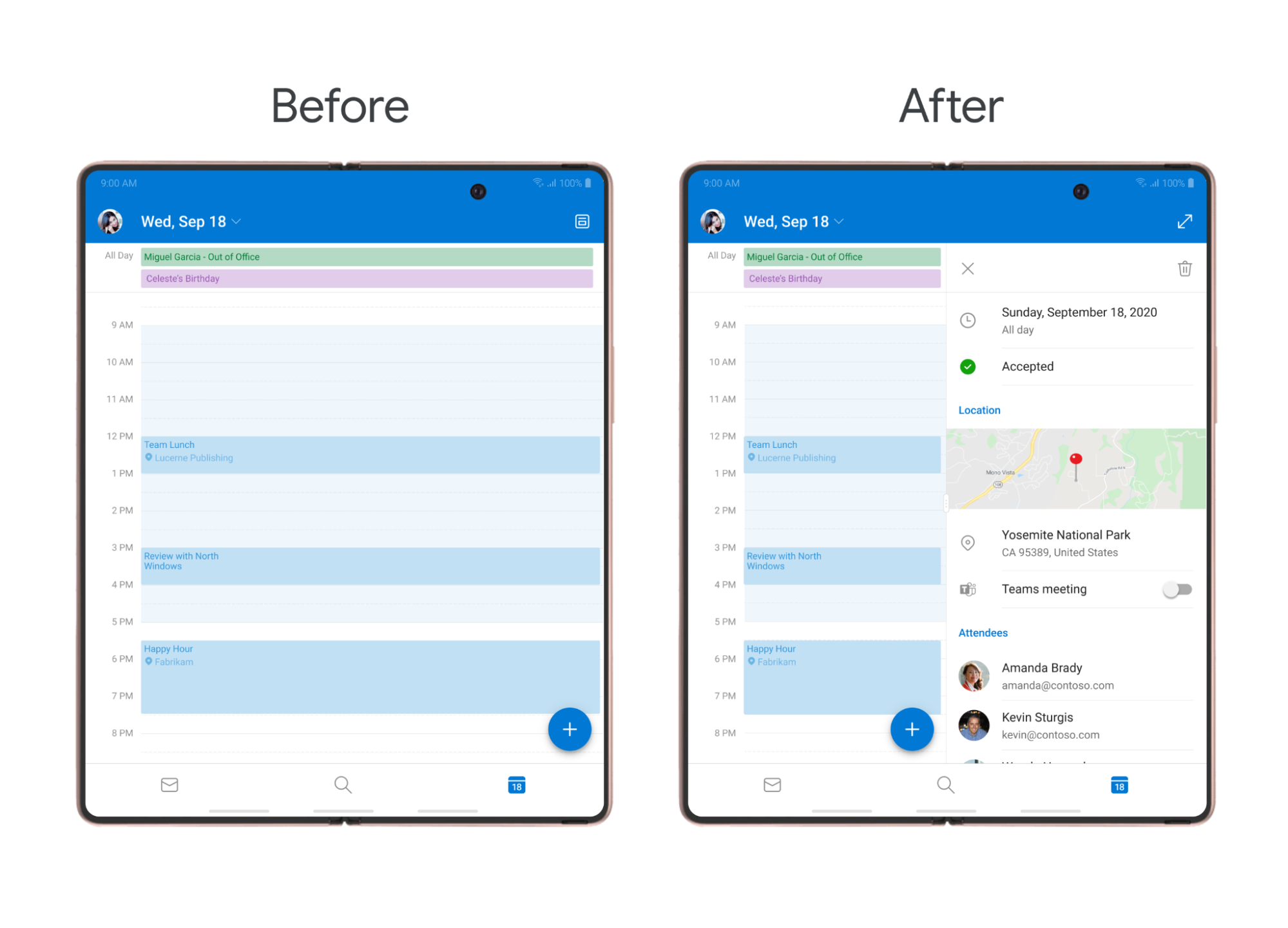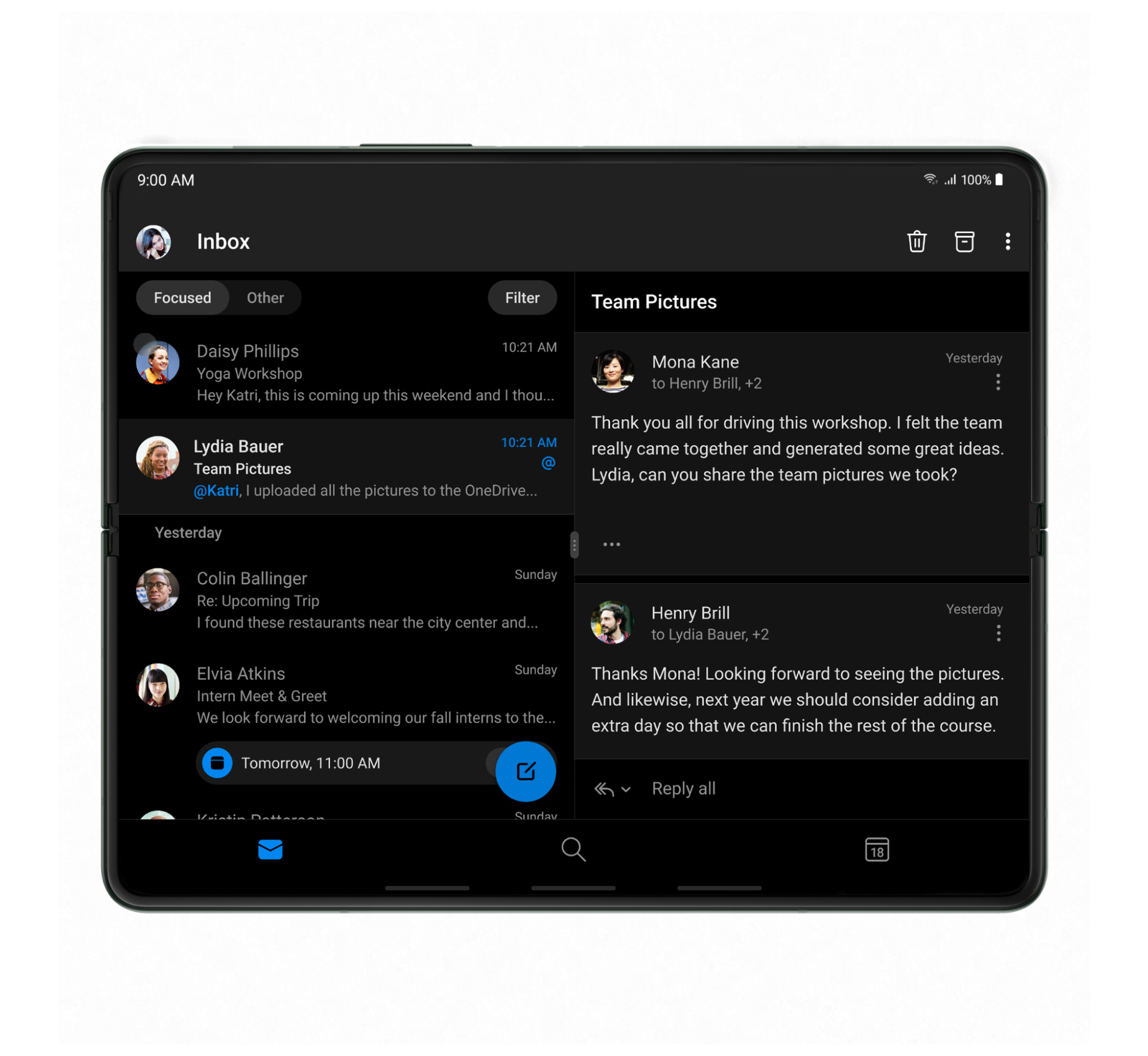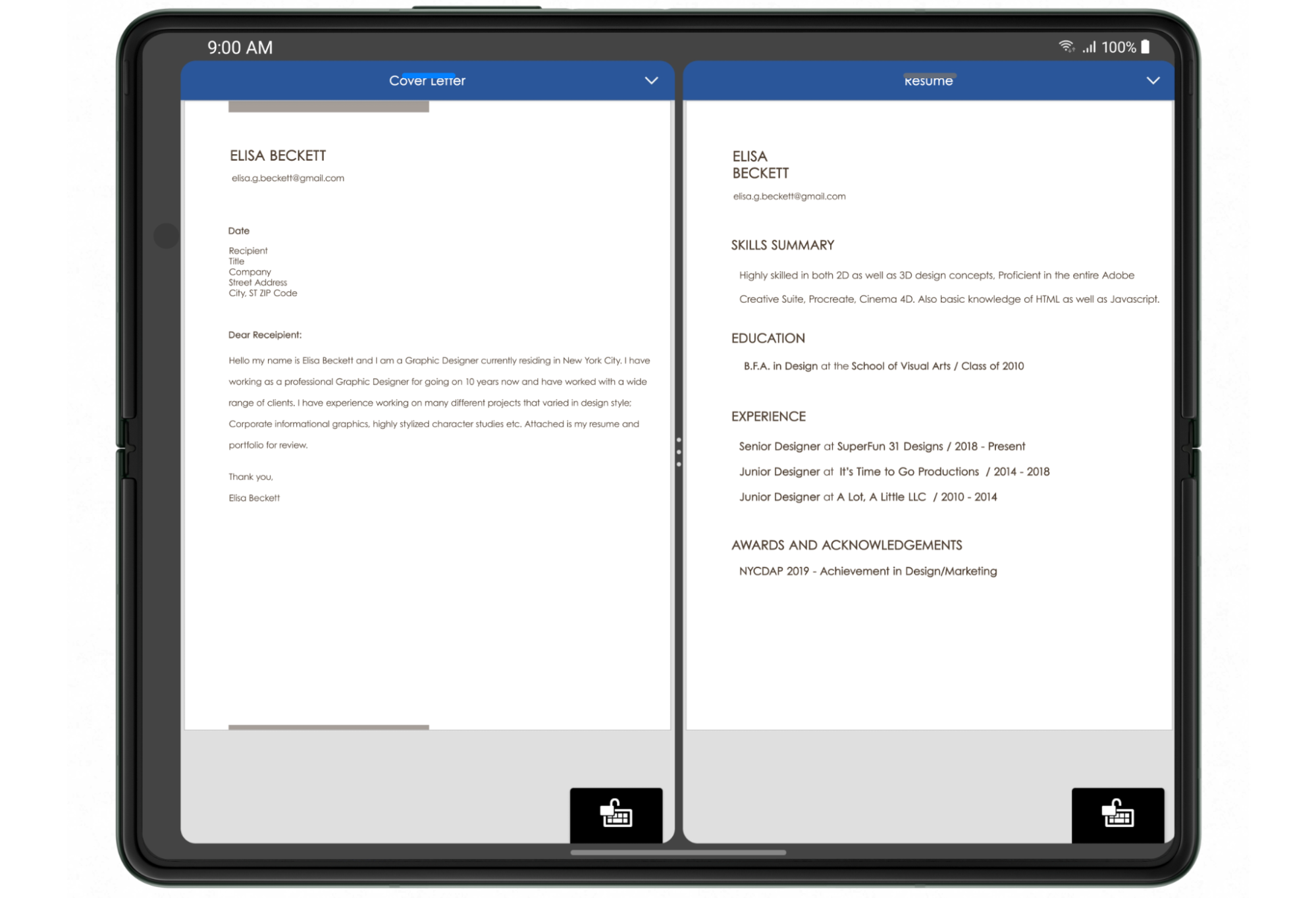Microsoft は、代表的な Microsoft 365 アプリを通じて、個人や組織が仕事、学習、データ整理、つながり、作成を支援しています。これを実現するには、お客様が使用するすべてのデバイスで最適な生産性環境を提供することが重要だと認識しています。生産性向上アプリへのタブレットや折りたたみ式デバイスの使用が爆発的に増加する中、Microsoft は、ユーザーが外出先でもデスクトップのような操作性を実現するため、Outlook、Teams、Office アプリのエクスペリエンスの改善に投資してきました。
タブレットと折りたたみ式のユーザーはかなりの割合を占めていますが、大きなフォーム ファクタ向けにエクスペリエンスが最適化されていないことについては、お客様から不満が寄せられていました。Microsoft、シニア プログラム マネージャー、Richa Srivastava 氏
Eyecon の取り組み
マルチ ウィンドウ モードは大画面のデバイスでの利用が広がっています。Microsoft などの企業は、大画面ならではの広いスペースを活用してユーザー エクスペリエンスを向上させています。Microsoft は、レイアウトを最適化し、マルチウィンドウやマルチインスタンス機能を組み込むことで、折りたたみ式デバイスやタブレットで Outlook、Teams、Office アプリを際立たせました。
大画面向けに最適化されたレイアウト
Microsoft はまず大画面に合わせてレイアウトを最適化することから始めました。たとえば、Outlook で展開したメールの横にメールリストを表示する場合にリストと詳細レイアウトを使用します。折りたたみ式デバイスやタブレットでは、2 つのビューが横に並べて表示されるか、垂直分割線で区切られたデュアルペイン モードで表示されます。受信トレイとスレッドのビューを切り替えることなく、受信トレイとカレンダーを簡単に確認して選別できるようになりました。

Teams アプリでは、デバイスが横向きのときのリスト / 詳細レイアウトが展開されていました。これによりユーザーは、大画面のデバイスでコンテンツ、チャット、ファイルに迅速かつ効率的にアクセスできるようになりました。

Office については、Word の読書モード、PowerPoint のリスト詳細レイアウト、Excel の拡張キャンバスなど、ドキュメント タイプに基づく独自のデュアル スクリーン エクスペリエンスも作成し、ユーザーがスペースを有効に活用できるようにしました。
マルチタスクのサポート
チームは、個々のアプリのエクスペリエンスを改善するだけでなく、アプリがうまく連携できるようにすることにも投資しました。Microsoft は Teams、Outlook、Office でマルチタスク機能を実装しています。アプリを分割画面モードやマルチウィンドウ モードにシームレスに移行できるように、UI を完全にサイズ変更できるようにしました。これにより、チャットをしながらドキュメントで作業するなど、生産性を高めるユースケースに対応できるようになりました。
さらに、アプリ、メッセージ、イベント間でテキスト、ファイル、メッセージをドラッグ&ドロップできるドラッグ&ドロップなど、マルチウィンドウ モードでの生産性を向上させる機能も追加されました。
最後に、Office チームはマルチインスタンスのサポートを追加しました。これにより、ユーザーは同じアプリの複数のインスタンスを並べて表示でき、2 つのドキュメントを同時に表示する場合に便利です。マルチ ウィンドウ モードにより、動画の作成を最適化し、軽量な編集と消費を実現できます。Outlook についてはマルチインスタンスも実装され、メールを作成しながら別のメールを読むといったユースケースを実現しました。

Teams では、あるチャットから別のチャットに切り替えるだけで、より効率的な会議を行うことができます。
大企業であることに加え、Microsoft アプリの従来の実績を考慮すると、マルチウィンドウ機能の実装は 1 か月のプロジェクトでしたが、マルチインスタンスの実装には 2 か月かかりました。エクスペリエンスの改善と顧客からの好意的な反応は、チームの期待をはるかに上回るものでした。
結果
Microsoft はその取り組みを通じて、大画面デバイスでのユーザーの効率性と生産性を高めました。これらの投資により、アクティブ ユーザー数とユーザー維持率が増加し、顧客から好意的なフィードバックが得られました。これらのアプリで成果が上がったことを受け、Microsoft チームは、あらゆる画面のユーザー エクスペリエンスを継続的に進化させる予定です。
始める
アプリを大画面向けに最適化する方法と、大画面アプリの品質の詳細をご覧ください。

